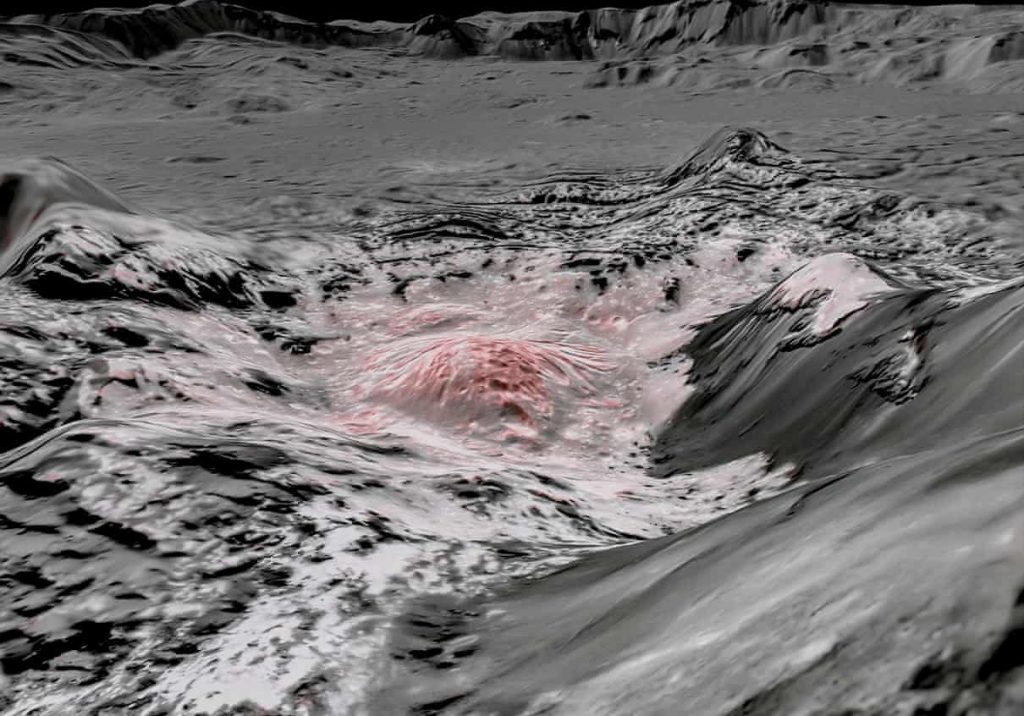The dwarf planet Ceres – long considered a barren space rock – is an ocean world with reservoirs of seawater beneath its surface, discovered a major exploration mission that released its results on Monday.
Ceres is the largest object in the asteroid belt between Mars and Jupiter, which allowed NASA’s Dawn space probe to capture high-resolution images of its surface, according to the Phys portal .
Now, a team of researchers from the USA and Europe has analyzed images sent by the probe, captured about 35 kilometers from the dwarf planet.
The Ceres Ocean Observation Site

Observations focused on the 20 million-year-old Occator crater and claimed that there is an “extensive reservoir” of salt water below its surface.
Numerous studies published on Monday in the scientific journals Nature Astronomy , Nature Geoscience and Nature Communications also specify more details about the asteroid, discovered in 1801 by the Italian Giuseppe Piazzi.
How scientists have concluded that Ceres is an oceanic planet?
Using infrared photographs, researchers found hydrohalite, a compound never found outside our planet, but common in sea ice. Maria Cristina De Sanctis, from the Istituto Nazionale di Astrofisica in Rome, said that the hydrohalite is a clear indication that Ceres had marine water.
“Now we can say that Ceres is a kind of oceanic world, as well as some of the moons of Saturn and Jupiter,” the researcher told AFP.
The team said mineral deposits appear to have accumulated over the past two million years.
Why discovery is important
This observation indicates that it is possible that the brine is still emerging from the interior of the planet and this could have important implications for future studies.
“The material found at Ceres is extremely important in terms of astrobiology. We know that all these minerals are essential for the emergence of life, ”she said.
Another scientific article by US researchers analyzed photos of the Occator crater and determined that its irregular surface may have been formed when water froze on the surface after being released by the impact of a meteor.
The authors emphasized that their observations demonstrate that these water freezing processes “extend beyond Earth and Mars, and have been active in Ceres in the geologically recent past”.
Reference
- CA Raymond et al. Impact-driven mobilization of deep crustal brines on dwarf planet Ceres, Nature Astronomy (2020). DOI: 10.1038 / s41550-020-1168-2
- A. Nathues et al. Recent cryovolcanic activity at Occator crater on Ceres, Nature Astronomy (2020). DOI: 10.1038 / s41550-020-1146-8
- RS Park et al. Evidence of non-uniform crust of Ceres from Dawn’s high-resolution gravity data, Nature Astronomy (2020). DOI: 10.1038 / s41550-020-1019-1
- MC De Sanctis et al. Fresh emplacement of hydrated sodium chloride on Ceres from ascending salty fluids, Nature Astronomy (2020). DOI: 10.1038 / s41550-020-1138-8
- BE Schmidt et al. Post-impact cryo-hydrologic formation of small mounds and hills in Ceres’s Occator crater, Nature Geoscience (2020). DOI: 10.1038 / s41561-020-0581-6































Discussion about this post